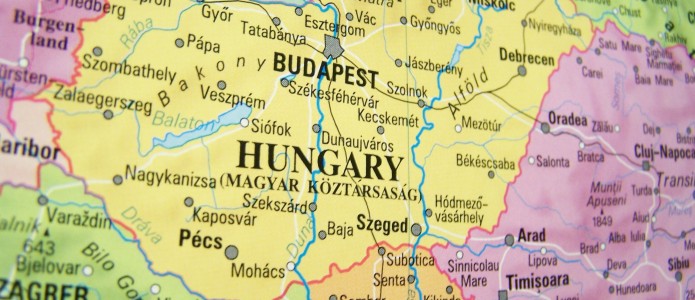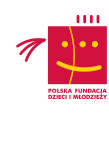
Agnieszka Kunicka from Refugee.pl Foundation writes about her impressions after study visit in Budapest and meeting NGOs that work with refugees and migrants in Hungary year after closing the boarder with Hungary and Serbia.
The overthrow of al-Kaddafi in 2011 and the subsequent destabilisation of the country resulted in increased migration from Libya. Furthermore, as a result of the civil war in Syria (in progress since 2011), 13 million Syrians were forced to leave their homes.
In 2014, migration flows towards Europe had been on the rise, along the Mediterranean route in particular. At the same time, Hungarian non-governmental organisations observed a downturn in the Hungarian government’s attitude to migrants and refugees. In the first quarter of 2015, larger migrant groups than before (chiefly from Syrian, Somalia, and Afghanistan) began reaching Hungary. Migrants used the so-called West Balkan route to reach Macedonia and Serbia, then Hungary and other European Union member states. In the second quarter of 2015, the Hungarian police and border guard began apprehending people at the border. A razor wire-fitted train dubbed “Mad Max” was used to seal the border with Serbia and to set up two transit corridors to countries further in European Union territory.
One year later, a study visit to Budapest was organised in June 2016. Employees of Polish non-governmental organisations specialising in integration and working with refugees and migrants were provided with an opportunity to learn more about the current situation in a European Union member state, and with premises for extensive deliberations concerning the migration phenomenon in Europe, the government’s and society’s capacity of responding to migration challenges, and the impact of governmental policy on the society and non-governmental organisations.
Many factors seem to suggest that European countries were largely unprepared for the influx of large migrant groups, which resulted in the migration crisis and the dramatic events later reported by the media. Yet in recognition of the broader European trend of efforts to neglect migration-related issues and to close borders, it may well be assumed that other countries have not been and are not well-prepared to handle challenges faced by Hungary in 2015 either. Regardless of political decisions made in a number of countries, certain key social situation and crisis management components may be analysed against the Hungarian example (capacity for using the non-governmental organisations’ potential, and the ability to mobilise the society to a good purpose alongside organisational competencies).
Collaborating (?) with Non-Governmental and International Organisations and the Society
In 2014, the state administration initiated a series of intense audits (tax audits included) of the organisation responsible for distributing Norwegian Fund resources, and of 58 organisations implementing projects with the use of these funds. Access to sensitive data was requested in the course of these audits, albeit inspectors had not been authorised to make such demands. The organisation did not receive any post-audit report, and learned about charges from media accounts. The police seized documentation at the Foundation’s office and private home of a staff member. Non-governmental organisations were accused by the media and government representatives of representing “foreign interests” and of ties to the political opposition. Audit and investigation procedures took more than one year. Concurrently, the Hungarian government continued distributing a considerably larger part of Norwegian Fund resources, earmarked e.g. for healthcare purposes. The conflict reached the European Union, which initiated a negotiations procedure. As no crime was proven in the course of investigation, the prosecution moved to close the case.
During the 2015 migration crisis, the Hungarian government was not interested in any extensive co-operation with non-governmental organisations. A mere 6 organisations with ties to Christian churches of different denominations were selected and invited to a co-ordination meeting; non-religious organisations were neglected altogether, regardless of their potential and experience. Ultimately, co-operation was established with 3 Christian organisations only – others continued operating independently and on their own behalf, fundraising as required beyond Hungarian territory. Our interlocutors frequently reported on written appeals for co-operation and support under crisis circumstances, submitted to the Hungarian government by international and non-governmental organisations. No response has ever been received.
Governmental integration programmes closed; a billboard campaign was launched. The government purchased commercial advertising space, filling it with navy blue billboards reading “When arriving to Hungary, you have to respect our law”, “… accept our culture”, etc. The inappropriateness of such communication and times of crisis and costs incurred notwithstanding, all billboards were printed in the Hungarian language, incomprehensible to migrants. It may thus well be assumed that the campaign was addressing the Hungarian society rather than refugees or migrants. The activity triggered protests in a part of the society and of local activists – in the wake of a public fundraising campaign, the same advertising space was re-purchased and filled with billboards apologising for action taken by the prime minister and his government.
One year after the border with Serbia was closed, people living in tents – or outdoors – have to face a wait of up to one month before they are transferred to transit locations. They are offered 1 pump as a source of water, and 1 cold meal a day. Concurrently, the Hungarian government continues to follow the adopted course of action, prohibiting non-governmental organisations from accessing areas inhabited by migrants in transit. While as an inter-governmental organisation UNHCR does have access to the border, they are not authorised to distribute food.
Management and Assistance in Times of Crisis
According to international organisation estimates, the government did not take proper advantage of the 11 days it was given to organise the border-closing exercise in 2015, which resulted in conflict and clashes between migrants and the police in the border area. Police officers used CS gas to disperse rioters. Migrants covered their noses and mouths with scarves and kerchiefs to protect the respiratory tract. Footage and photographs depicting these developments were occasionally published in the media in the context of the impossibility to identify migrants.
In inland Hungary, the failure to secure elementary sanitary conditions (lavatories, access to running water) was the fundamental problem, as was the lack of temporary shelters at migrant transfer and layover locations. One such example is the media-famous Keleti Railway Station in Budapest, which suspended all rail connections to other European countries. The station’s immediate neighbourhood is covered in concrete with no greenery or trees; people waiting many days for the station to re-open and for trains to begin running were exposed to burning sun on hot summer days. Migrants sought relief from the heat in the station’s underground passage, slept in makeshift cardboard shelters in local parks, and used public water pumps in attempts at partial hygiene.
Volunteers (private individuals and non-governmental organisations) provided migrants spontaneously with water and small food portions. While non-governmental organisations struggled to organise basic medical help, co-operated with volunteers, and tried co-ordinating their work, they repeatedly emphasised that they would not be able to respond to current needs properly: European (AMIF) funding had been suspended for eighteen months, as a result of which most organisations were forced to reduce staffing and lay experienced employees off. This also translated into a shortage of European funds for the purchase of the most needful things and services (such as mobile lavatories) which would have helped resolve some of the most immediate problems.
One private volunteer began his daily work with collecting garbage in the local park inhabited by migrants, as the number of garbage bins was insufficient, and municipal authorities did not provide cleaning services. He then found that migrants – women and children in particular – require food and hygiene products, and began organising in-kind contributions himself. When telling his story he said that men usually slept on park peripheries, awaiting any change in the general situation, while women and children remained in more central park locations, children sheltered under cardboard from the sun. The volunteer believes that this might have been one of the reasons for which bystanders not venturing deeper into the park could have had the impression that there were few women and children in the migrant group.
Refugees and migrants were provided with addresses of authorities responsible for refugee status decisions, with no information whether these agencies are located in the same town or city.
International organisations – bound with rigid procedures, inflexible, uninventive – failed to meet the challenge of the complex situation as well. Moreover, the considerable financial resources of international organisations had not been released in a fast-track procedure emergency conditions require.
As a non-governmental organisation representative, I find the government’s reluctance to act positively and negative attitude to social organisations unendingly disappointing, not to mention the inertia of giant organisation in times of crisis, when even action taken by private individuals was valuable. The fact of the crisis arising is not an issue – it is how we deal with it and what is done about it.
Author: Agnieszka Kunicka, July 2016
Study Visit to Budapest took place on June 2016, within Citizens for Democracy Programme financed by the EEA Grants.




